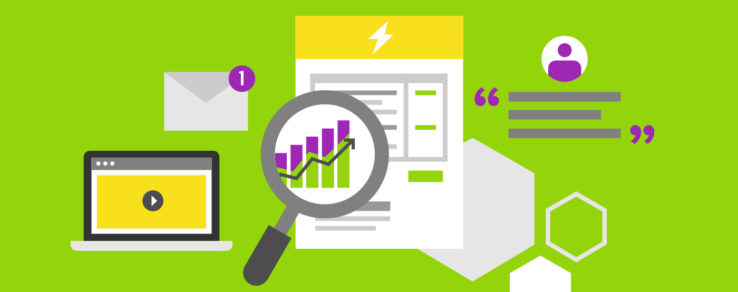Energy prices are expected to continue rising this year and next, making it imperative that utilities have an energy rate communication strategy in place to help customers navigate rising bills.
Average U.S. residential electricity prices will reach an estimated 15.33 cents/kWh in 2023, jumping from 13.72 cents/kWh in 2021. To put this into perspective, the average U.S. residential customer uses about 886 kWh per month. This means the average energy consumer will pay $136 per month in 2023 when they only paid $121/per month in 2021 — a potential increase of $180 per year.
While this may not seem like a life-changing sum, it greatly impacts the day-to-day life of many residential customers, especially low-to-medium-income customers or those who are behind on electricity payments. Some regions of the country are also getting hit harder with price increases than other regions.
Unfortunately, most customers don’t seek financial help from their utility or even know it’s available. Worse, many find the promises of payment assistance programs too good to be true. And others are just plain angry that costs are rising.
To mitigate this frustration and offer aid to more customers, Questline Digital recommends a proactive and empathetic energy rate communication strategy. Specifically, we’ve seen success when utilities implement the following tactics:
- Increase education
- Don’t leave it to PR
- Use more video
- Provide energy-saving tips
- Share program information before customers need it
- Promote home assessments and energy audits
- Use customer testimonials
Increase education
It’s common for customers to blame their utility for rising rates, even when it’s not the utility’s fault. Help customers understand what causes high energy bills. With more knowledge comes less frustration.
When customers Google questions like, “Why are electricity costs rising?” they are met with a barrage of news stories and social media complaints, and they’re not always sure which to believe.
Your utility should be the trusted authority. Use content marketing to explain how the rising cost of fossil fuels is impacting electricity rates, where renewables fit in the puzzle and what specifically your utility is doing to reduce the costs of power generation and distribution.
Be transparent and show proactive steps, even if the savings won’t be tangible for some time. Let customers know your utility is working hard to help.
Don’t leave it to PR
While media relations is an incredible tactic for sharing news with the community, it shouldn’t be the sole tool in your tool belt. If your customers only hear about available financial aid or what’s driving higher prices from local publications, they aren’t going to think highly of their utility. Get ahead of the news cycle and share updates and aid directly with customers.
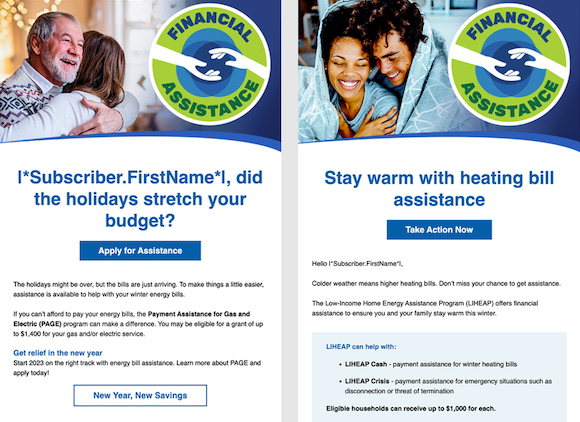
See this example from a Questline Digital client. Knowing that holidays and winter months can be a stressful time for finances, the utility proactively shared payment assistance programs with a segmented email campaign to targeted customers.
Use more video
Video content should be included in your energy rate communication strategy. Why? Because explainer videos can make complex topics easier to understand. Images and animation aid with learning, while short video lengths and fast action keep viewers’ attention.
Create and share clips that illustrate the forces at play behind higher energy costs, promote programs and explain billing options. Share the videos on your website, YouTube channel and social media, along with newsletters, advertisements and email promotions.
Provide energy-saving tips
The U.S. Department of Energy estimates that the typical household can save 25% on utility bills with energy efficiency measures. That’s significant, particularly during a period of rising rates. With educational energy-saving advice, your utility can help customers make necessary home improvements or behavioral changes.
We Energies, an energy provider serving areas of Wisconsin and Michigan’s Upper Peninsula, uses an animated video to show customers how they can update their homes to save energy. At just over two minutes long, the video focuses on stopping air leaks by doors, windows and attics.
Questline Digital provides clients access to an extensive video series titled “You Can” to help homeowners and renters with energy efficiency projects. The videos provide step-by-step instructions on DIY improvements that customers can make no matter what their budget is.
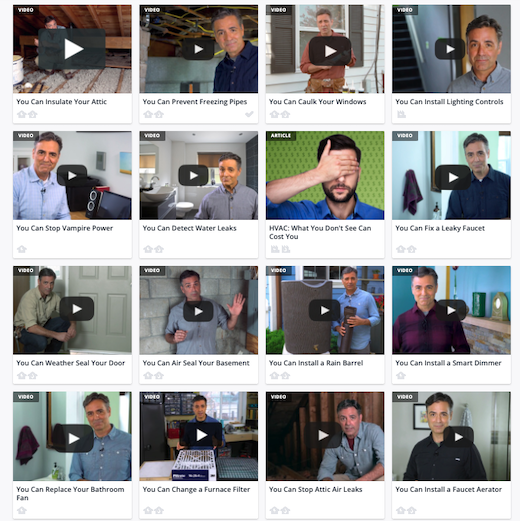
Share program information before customers need it
While education on energy-efficient products and behaviors can certainly help, utilities shouldn’t rely on efficiency messaging alone.
Utility-specific payment programs and federal assistance programs like LIHEAP and WAP should be promoted widely and proactively. Often only shared with customers who have fallen behind on payments or who have qualified in the past, assistance programs go underutilized. While audience targeting is highly effective, current economic conditions require that more customers are made aware of these programs, including customers who may be eligible for the first time.
MCE, a nonprofit renewable energy provider in California, uses simple animation to highlight assistance programs available to customers and explain how they can apply. Housed on YouTube, the utility can call out key moments with time stamps. This makes it simple for customers to find what information they need.
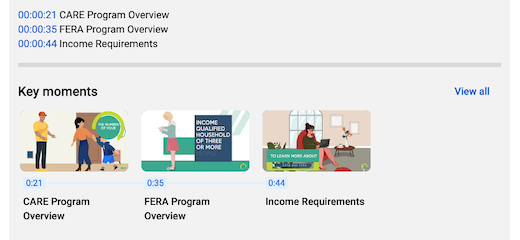
PG&E, an energy provider located in Northern California, uses this 30-second animated video to tell the story of a family and their experience with the utility’s financial aid programs. Short and sweet, this video can be used on social media and in digital advertising placements.
Promote home assessments, installation and energy audits
Just like financial aid programs, complimentary home assessments and installation services are often unknown to many customers. Utilities should expand the promotion of these value-added services as part of their energy rate communication strategy.
TECO Energy, an energy holding company based in Tampa, Florida, shares its Online Home Energy Audit Tool via TV advertisements, reaching a mass audience. These clips connect with viewers emotionally while reassuring people of the convenience and positive impact audits can have on their energy bills.
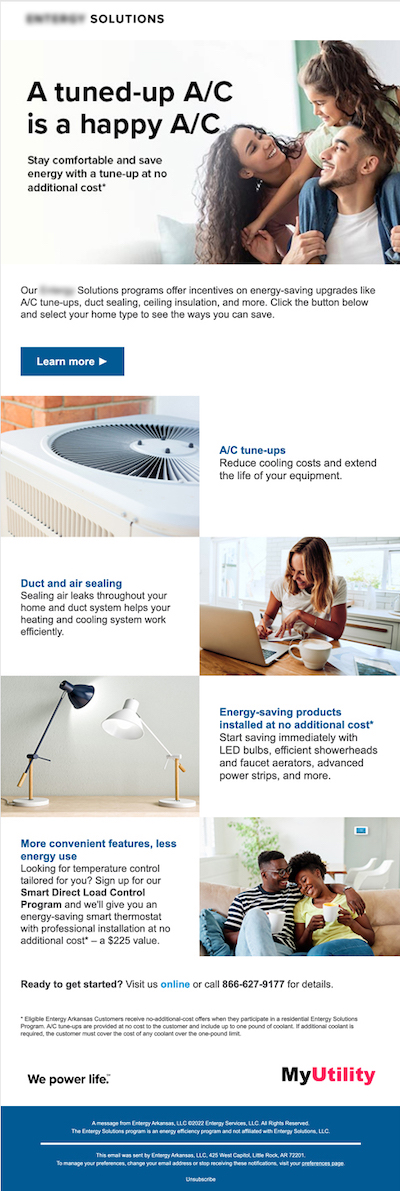
This email example from a Questline Digital client promotes complimentary installation and tune-up services for electric appliances and fixtures. Reaching customers directly in their inboxes, recipients are encouraged to take advantage of available services to reduce energy consumption.
Include customer testimonials
Financial aid and energy efficiency programs can often feel too good to be true. Dispel skepticism by telling customers about the positive experiences their peers have had. Ask customers who have made efficiency upgrades or used utility services if they would be willing to share their stories through testimonial videos, articles and quotes.
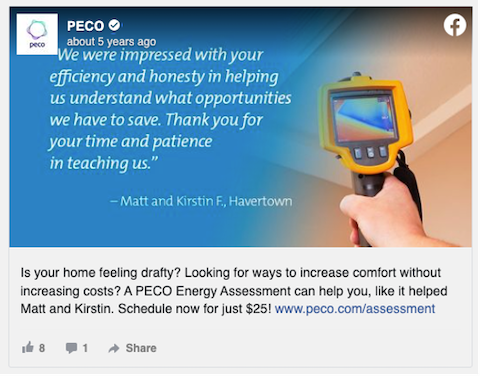
Here, Philadelphia-based energy company PECO shares a residential customer’s experience on Facebook, showing other community members how they might take advantage, too. Social proof is highly effective when shared on social platforms or between peers.
Help Customers with an Energy Rate Communication Strategy
Overdue balances and rising energy costs will continue into 2023 and beyond. Get ahead of customer misconceptions and pain points with proactive communications that focus on education, peer validation and widespread awareness.

